Vertical Indoor Garden Ideas – 7 Beautiful Ways to Add a New Dimension to Your Plant Display
From houseplants to herbs and even vegetables, you can grow a wide range of plants indoors vertically
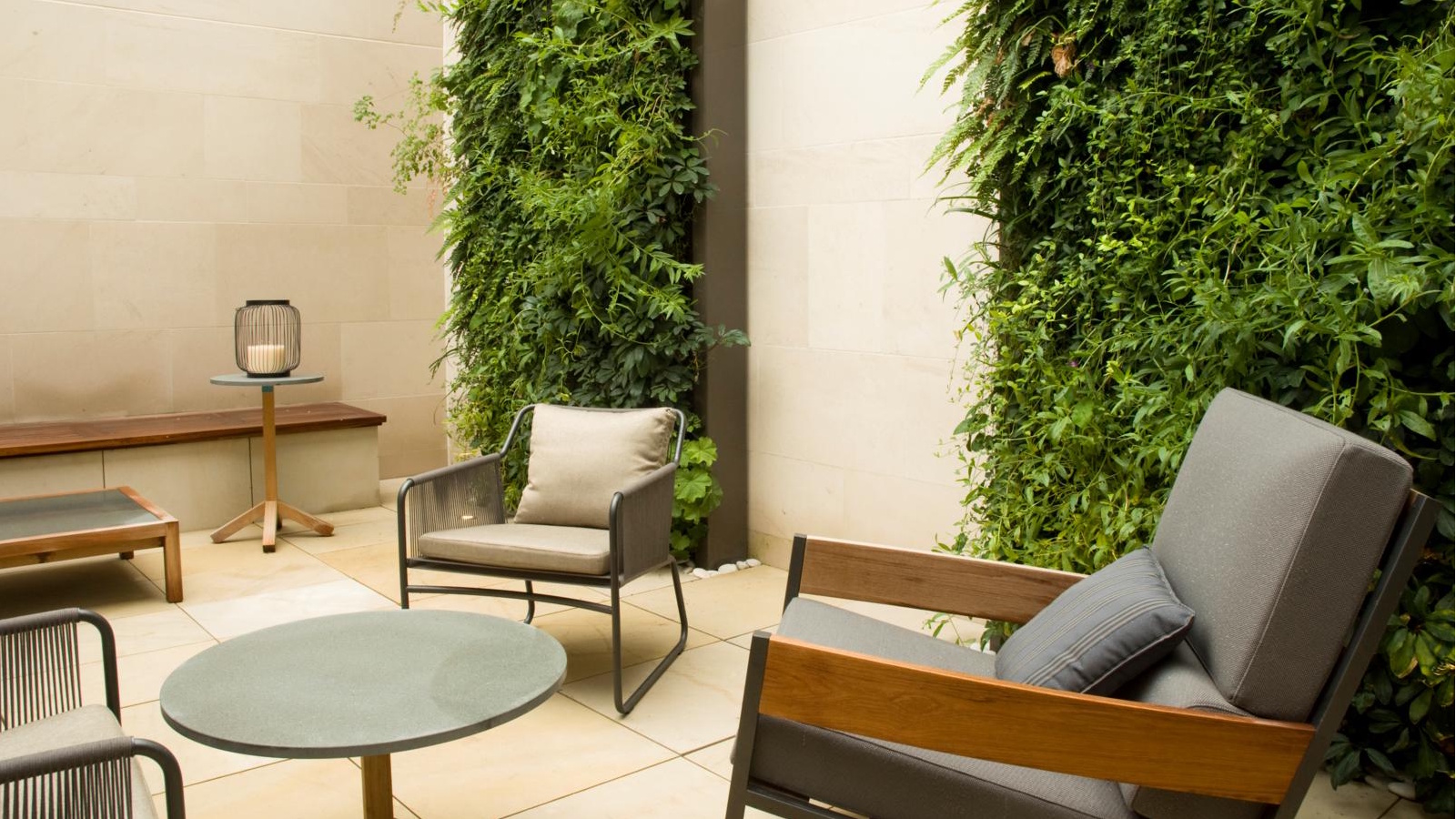

Having a vertical garden in your yard is like having your very own botanical spectacle to enjoy, instantly bringing a new dimension to your planting, as well as being space-saving. It isn't just for the yard, though, as you can create a vertical indoor garden, too. The compact nature of this planting style is often more beneficial in an indoor environment, where it suddenly doubles the amount of room you have for plants in your home.
Indoors, a vertical garden can take many forms. Whether it's making a living wall or simply creatively displaying houseplants. Not only can you reap the rewards of this being space-saving, but it also provides a unique green display for your home, sure to capture the attention of your visitors.
I have also personally found that having a vertical indoor garden brings me peace. It has transformed my living room into a green sanctuary that I can escape to daily. With so many possibilities of how this can look, it can feel overwhelming. So, I've compiled my top seven vertical indoor garden ideas to help inspire you.
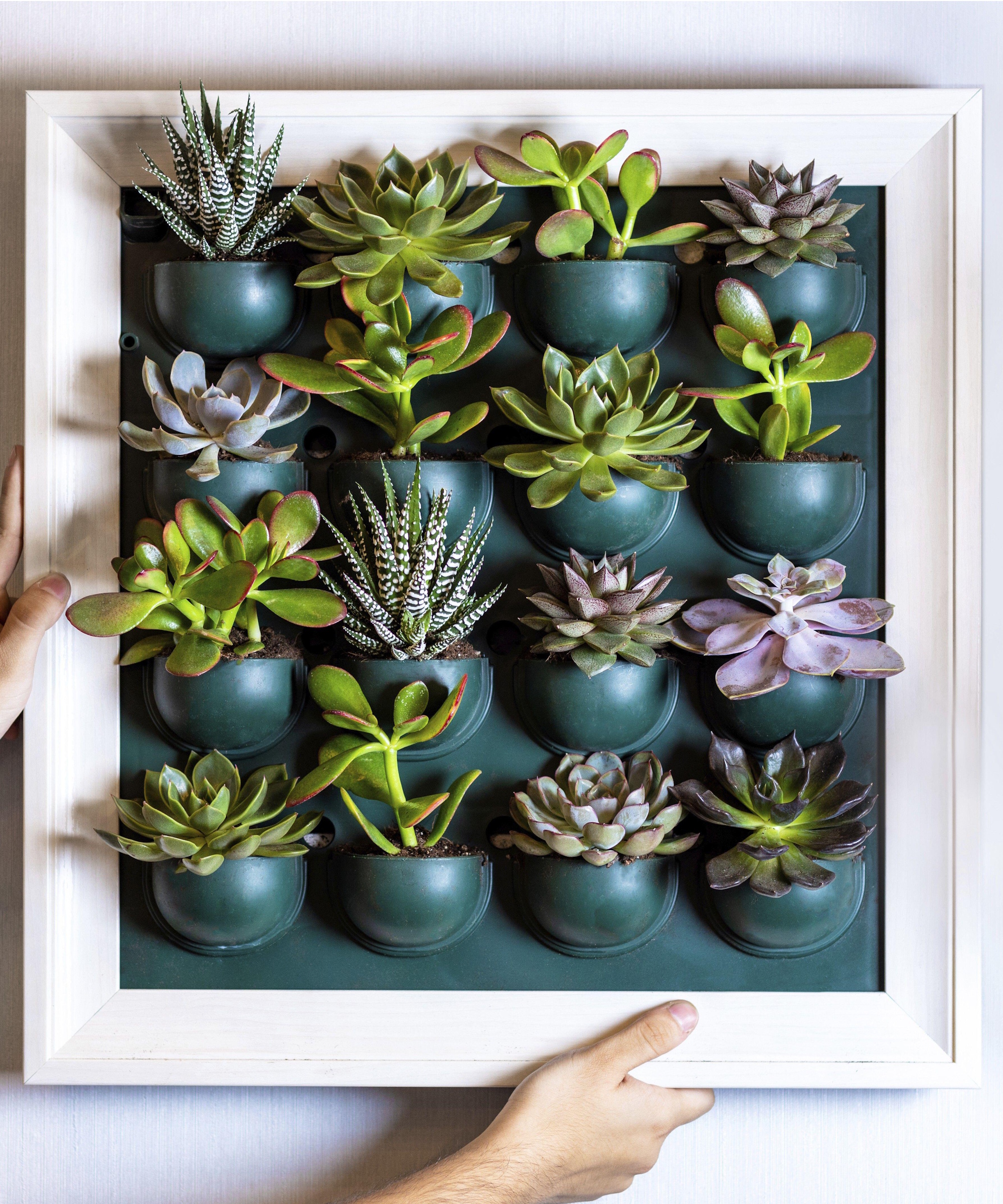
7 Vertical Indoor Garden Ideas
Take your indoor garden to the next level by incorporating a vertical element. This can look like full green walls or just one special houseplant mounted on the wall. Here are seven beautiful ideas to get you started:
1. Focus on Foliage
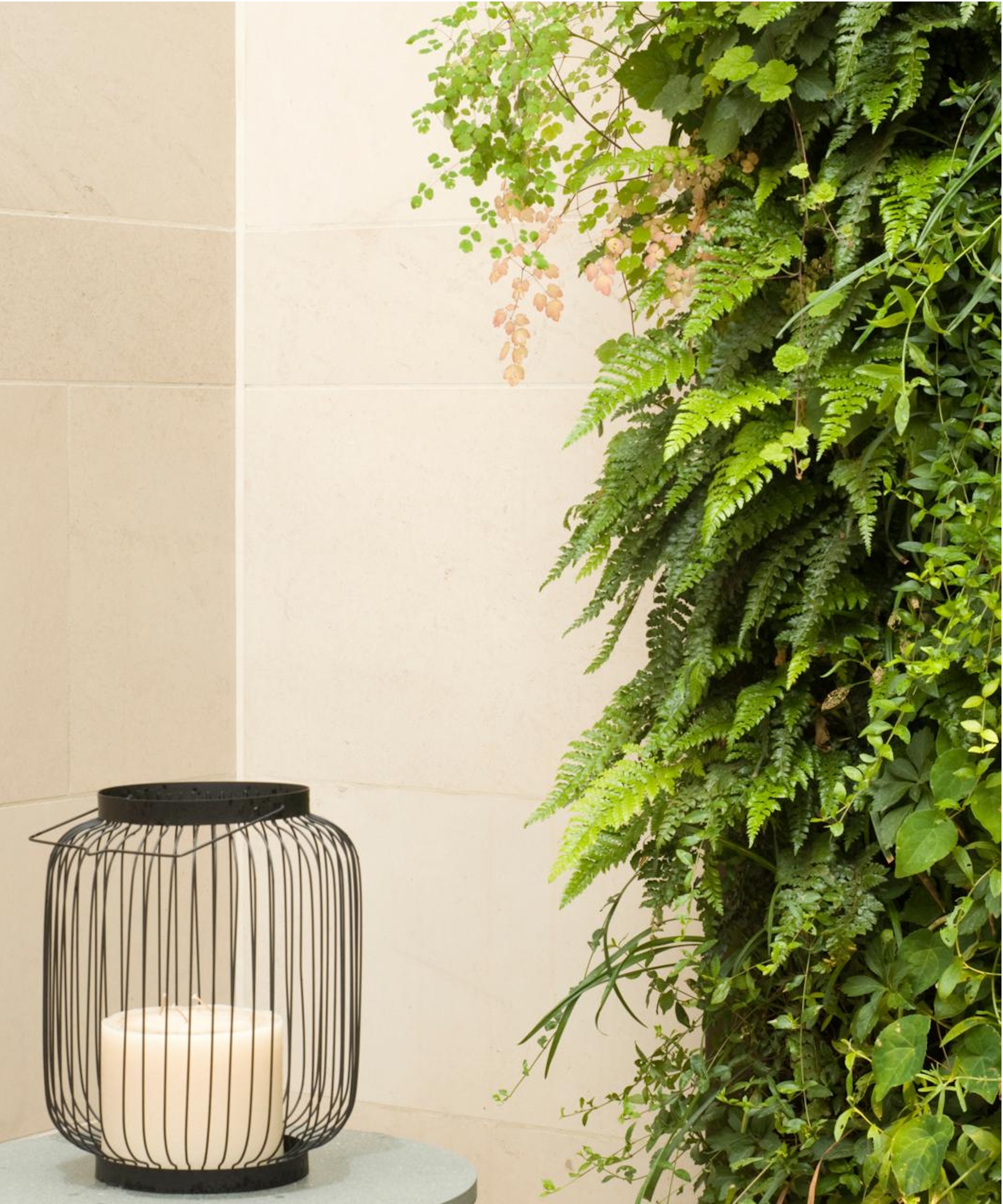
For instant impact, you can create a vertical garden full of foliage.
Just like the image above, this style of living wall is all about abundant, tightly-packed, showy foliage.
I particularly love the blend of different indoor ferns in the above living wall, bringing together a range of textures and frond shapes.
Design expertise in your inbox – from inspiring decorating ideas and beautiful celebrity homes to practical gardening advice and shopping round-ups.
Maidenhair fern (from Walmart), for example, brings movement with dainty circular leaves, and Boston fern (from Walmart) brings broader leaves with stronger structure.
The easiest way to set up this vertical indoor garden idea is by using a hanging wall planter (like this one from Amazon). They have planting pockets which can be watered easily with a long, narrow-spout watering can (like this from Amazon).
2. Create a Tropical Escape
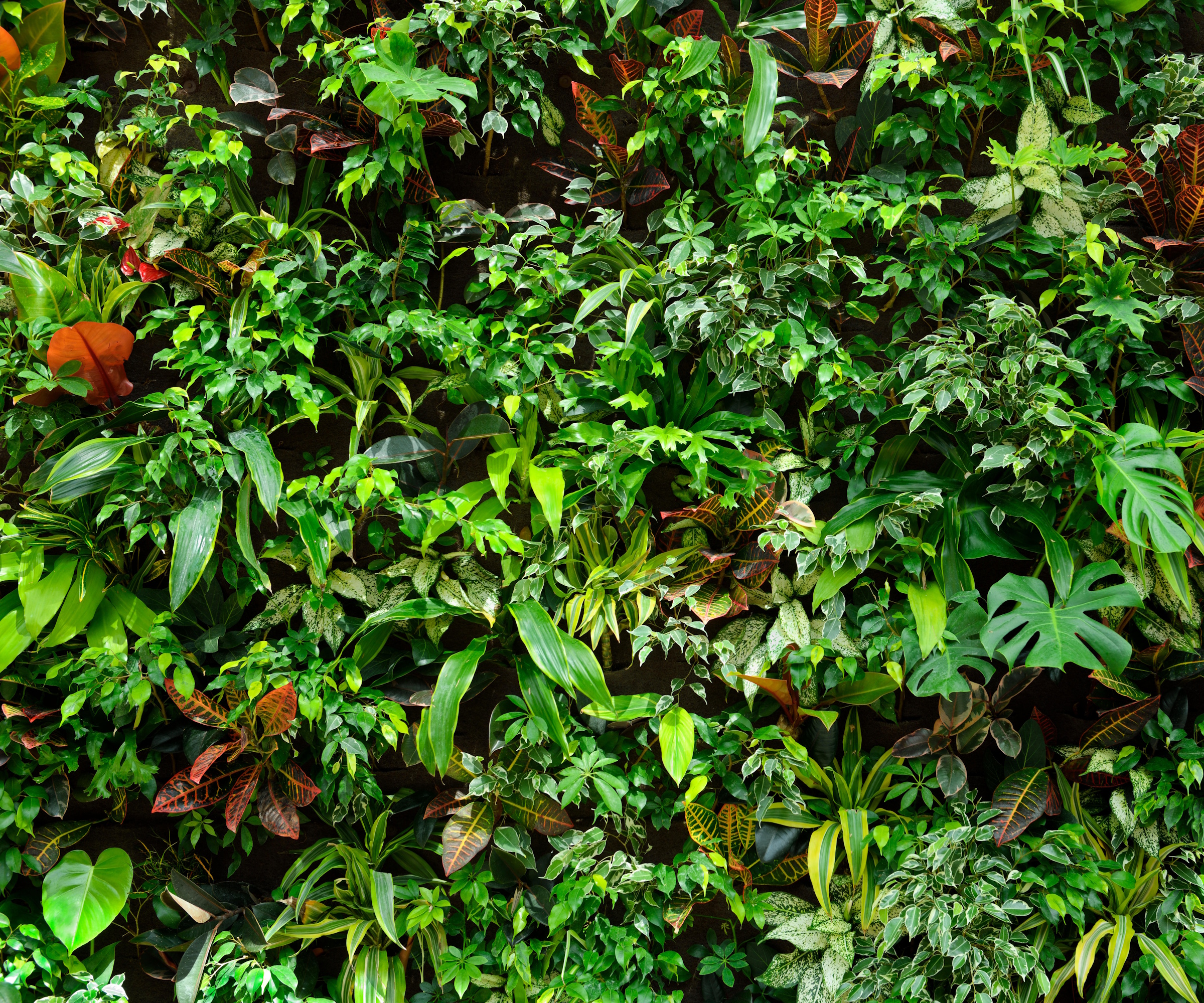
If, like me, you love tropical indoor plants, why not dedicate a whole wall to them?
This vertical indoor garden idea works similarly to the foliage living wall, but is specifically curated with the most impressive tropical plants.
The image above best demonstrates this, with beautiful fenestrated monstera leaves, variegated indoor plants like philodendrons, and the best pothos varieties.
Something to note about this kind of green wall: it will require lots of humidity to keep the tropical foliage looking its best. With the plants packed this closely together, a humid microclimate will be created, but you likely will also want to use methods to increase humidity for indoor plants.
This includes placing a humidifier (from Amazon) nearby, or misting regularly with this plant mister from Amazon.
3. Turn Plants into Artwork
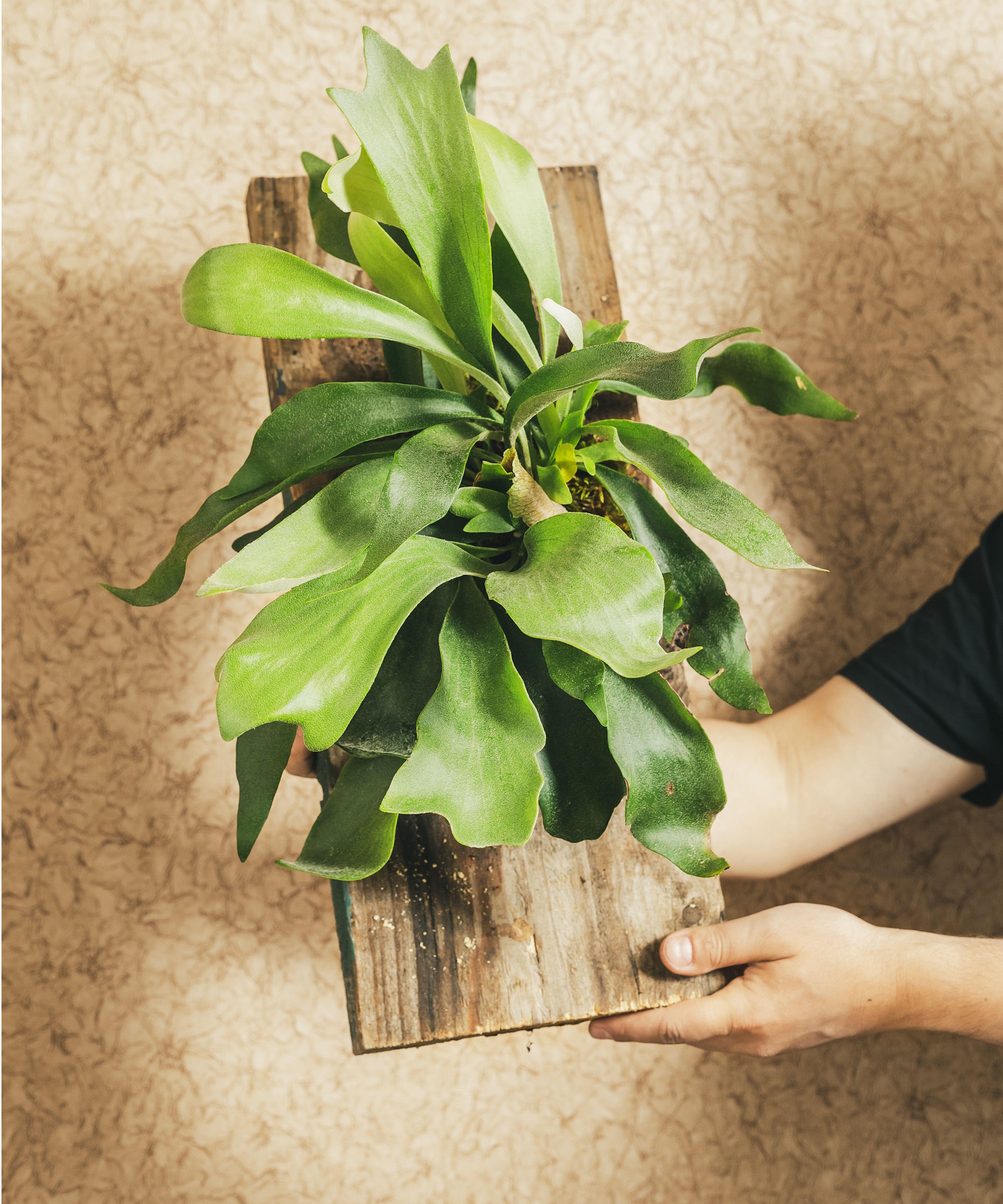
For something more subtle, and one I have used in my own home, you can turn to mounted houseplants to create a vertical indoor garden.
There are lots of houseplants that can be mounted onto wooden boards or driftwood to be displayed as artwork on the wall. This is most successful with epiphytes (plants that grow on surfaces like trees and rocks in their natural habitat, rather than in soil).
For example, moth orchids (from The Sill) and staghorn ferns (from Walmart) can be mounted. You can even purchase orchid fiber mounting boards from Amazon.
When watering mounted houseplants, it often works best to take them down and soak them in a basin, letting them drain, and then hanging them back up. This gives them a deep watering to maintain hydration.
4. Succulents, Succulents, and More Succulents
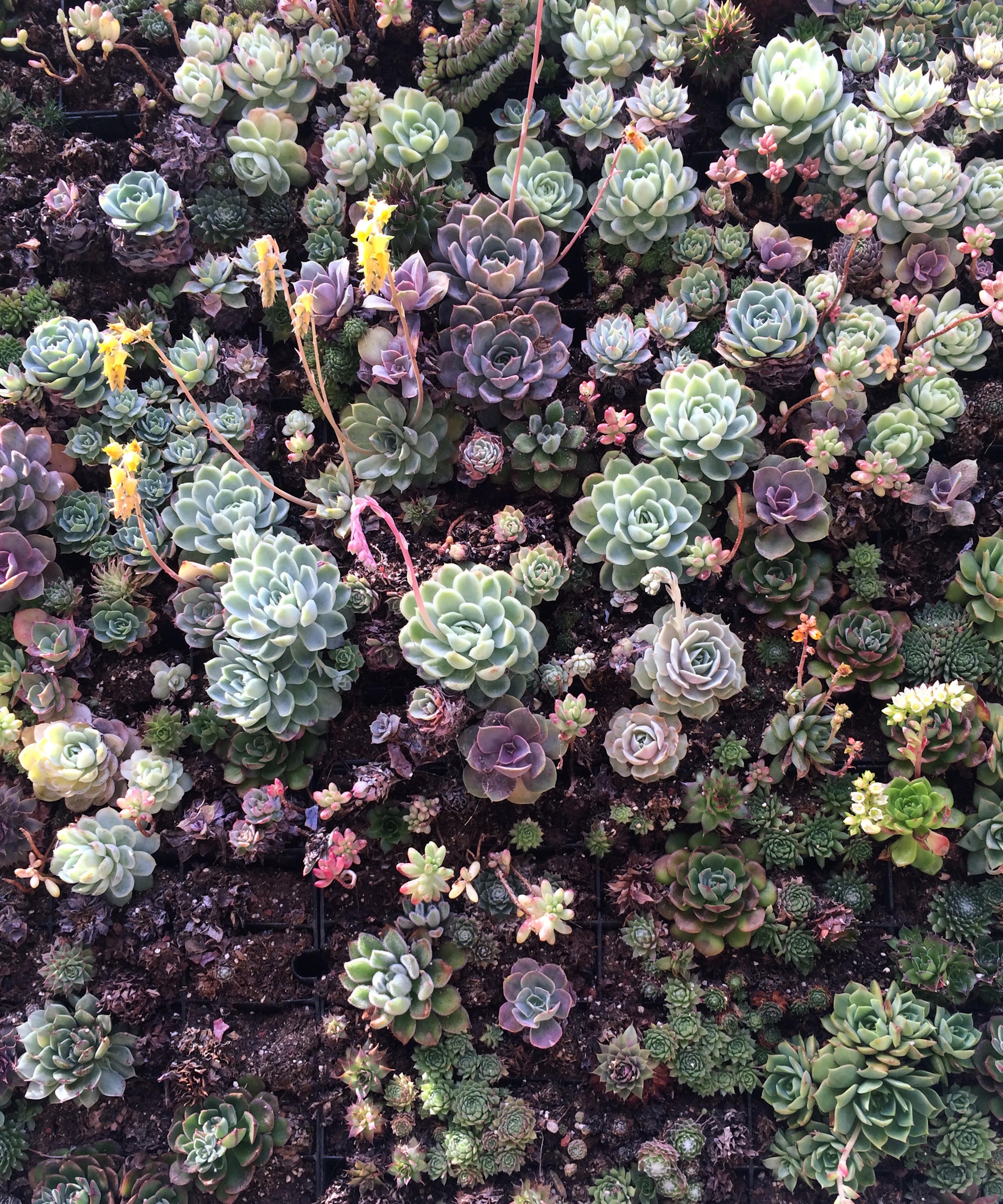
This vertical indoor garden idea brings textural interest, as well as visual. It consists of a panel full of succulents, packed together like a chocolate box selection.
You can use the best indoor succulents to achieve this look, although the smaller varieties tend to work best. This selection of succulents from Walmart would work well.
Some DIY is required to achieve a vertical succulent display.
It best works with a glassless box frame (from Amazon), filled with succulent soil (from Amazon).
You will then want to place some chicken wire (from Amazon) or mesh in the frame, with large enough holes for planting pockets. Plant each of the succulents in a separate space, packed tightly to hold each other in place when it's displayed vertically.
5. Make an Edible Wall
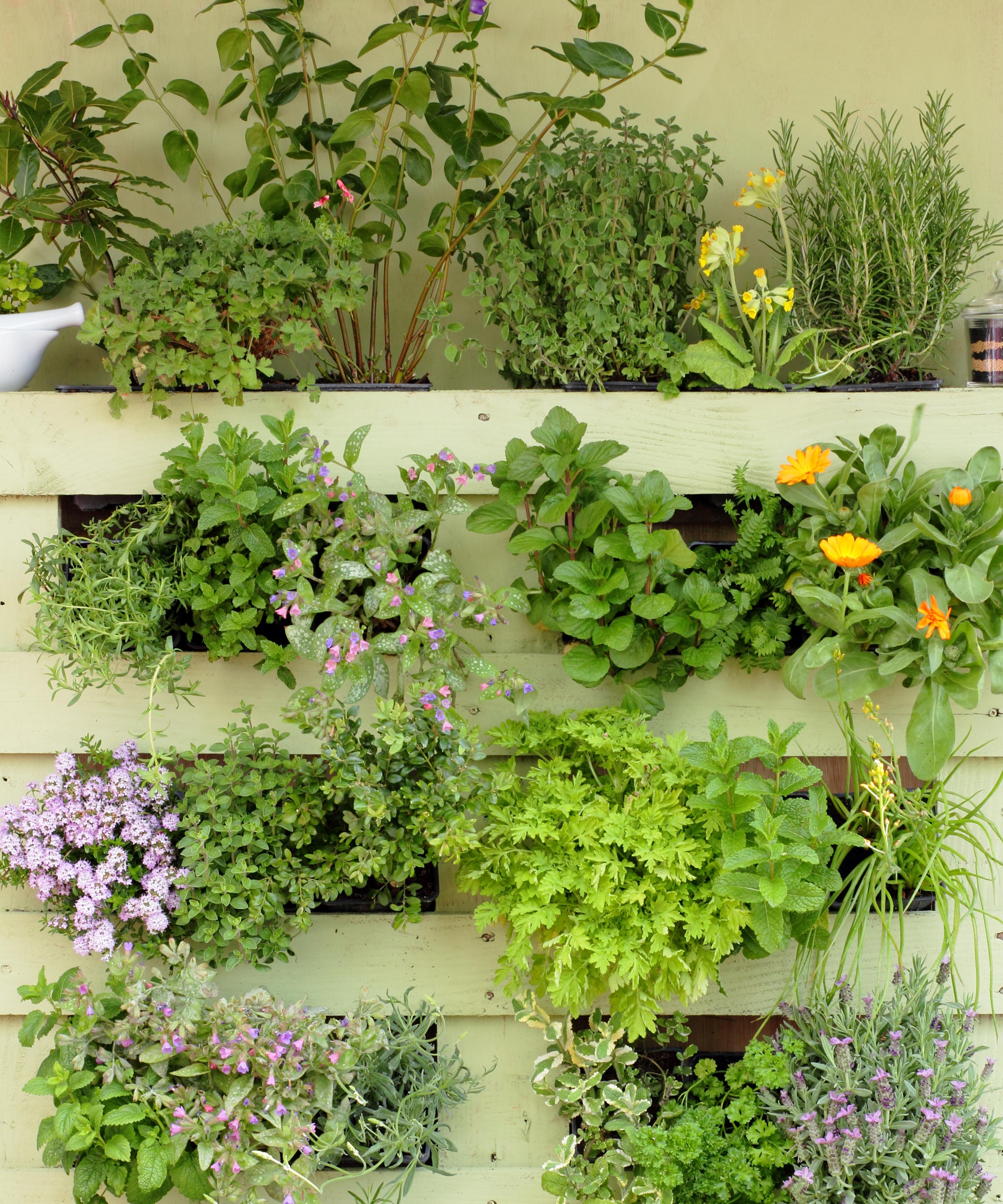
Vertical indoor gardens don't have to be purely ornamental. You can use indoor herbs and edible indoor plants (including some vertical vegetables that can be grown indoors) for a green wall you can eat.
This is as easy as filling a hanging wall planter (like this one from Amazon) with the easiest herbs to grow, or you can put up some stylish layered indoor plant shelves to display them.
For something more unique, you can recreate the above image with these vertical plant mounts from Amazon. With wall planters with hooks (like these from Amazon), you can attach them to the slats.
6. Use a Hydroponic Tower
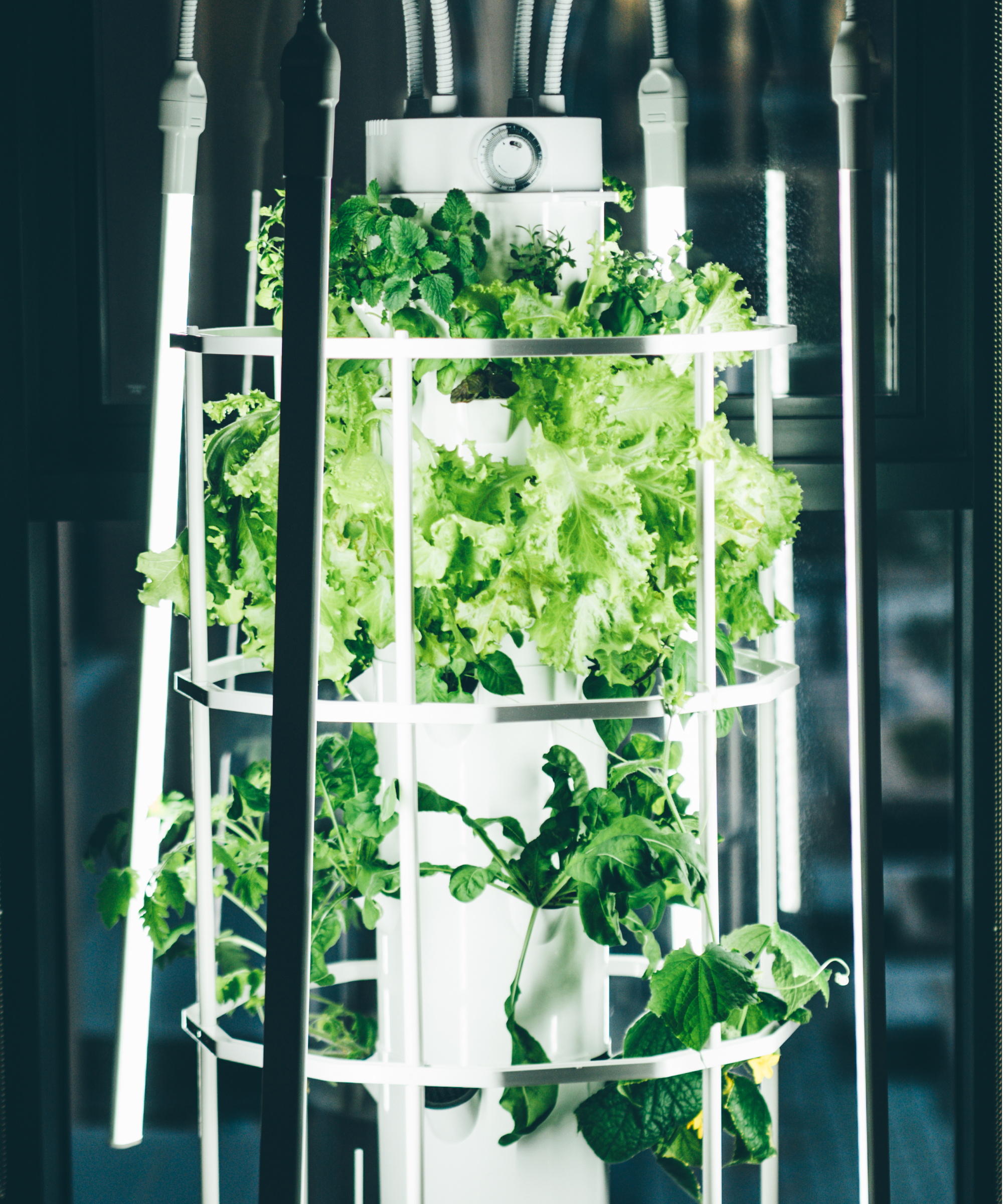
If you fancy growing vegetables indoors, you can make the most of vertical space by using hydroponic gardening techniques.
Hydroponic towers (like this from Amazon) are designed to grow plants in water. It works particularly well for growing leafy greens, like growing lettuce indoors, though there are also some hydroponic houseplants you can grow in this setup.
When using this vertical indoor garden method, make sure to read up on hydroponic gardening mistakes to avoid. This includes keeping the water clean, which failing to do could risk pest and disease issues for your plants.
7. Grow Trailing Air Plants
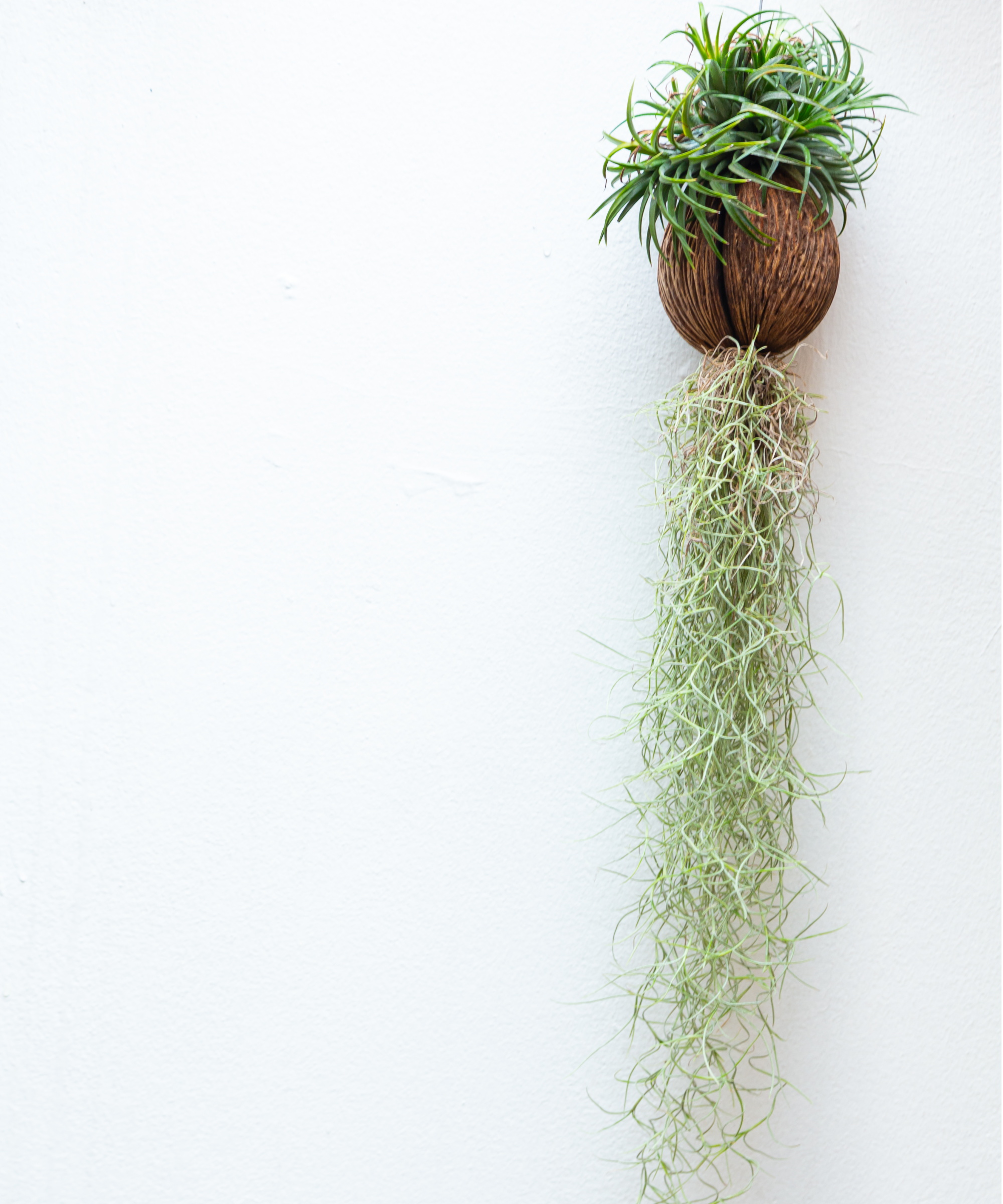
Perhaps the most low-effort way of creating a vertical indoor garden is simply growing the best indoor hanging plants. But, to take it up a notch, you can choose trailing air plants.
As the image above demonstrates, air plants like Spanish moss (from Amazon) beautifully cascade down when elevated from the ceiling, or even from a high shelf.
Other trailing air plant options include Tillandsia caput-medusae, which can be styled upside down in hollow shells – like these urchin shell air plants from Amazon.
As for caring for air plants, all they need is a weekly misting, a bright spot, and weekly feeding during spring and summer. You should use a specific air plant fertilizer for this, like this air plant food from Amazon.
FAQs
How do you water an indoor vertical garden?
This depends on the kind of indoor vertical garden you have. If there is a drip tray installed, you can water your vertical garden top-down. Other methods include removing individual plants from a vertical hanging planter to soak from the bottom. Some indoor vertical garden plants also only need misting, like air plants.
If you want to extend the beauty of your indoor vertical garden outdoors, check out our guide to living wall ideas and living fence ideas, as well as the best plants for a flowering living wall.

Tenielle is a Gardens Content Editor at Homes & Gardens. She holds a qualification in MA Magazine Journalism and has over six years of journalistic experience. Before coming to Homes & Gardens, Tenielle was in the editorial department at the Royal Horticultural Society and worked on The Garden magazine. As our in-house houseplant expert, Tenielle writes on a range of solutions to houseplant problems, as well as other 'how to' guides, inspiring garden projects, and the latest gardening news. When she isn't writing, Tenielle can be found propagating her ever-growing collection of indoor plants, helping others overcome common houseplant pests and diseases, volunteering at a local gardening club, and attending gardening workshops, like a composting masterclass.
You must confirm your public display name before commenting
Please logout and then login again, you will then be prompted to enter your display name.